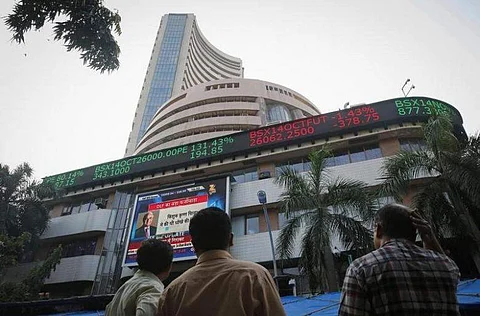

There are many who believe that we are just a year or two away from a full-scale world recession, a kind of repeat of what we saw a decade ago after the international financial crisis. The trade war triggered by Donald Trump and his tariff barriers to the US economy is only hastening the process, hurting emerging countries like India the most.
The London-based market intelligence company, IHS Markit, said trade growth, which was around 5 per cent at the beginning of 2018, fell to near zero by the end of the year; and with a sharp increase in trade conflict, “a contraction in world trade could drag down the world economy even more.”
There are many elements that go into the making of a recession. An important one is consumer sentiment. If people sense bad times are coming, they crimp and save more than normal for a rainy day; they avoid spending on what they perceive to be luxury, and sometimes even postpone buying essential goods. Result: Demand is hit, forcing an economic slowdown.
SALES VANISH
We are currently witnessing some classic examples of consumer withdrawal in the ‘driver’ segments of the economy. June 2019 has marked one full year of falling sales in the Indian auto industry. The passenger vehicle (PV) segment, according to the Society of Indian Automobile Manufacturers (SIAM), recorded a slump of 17.5 per cent in June 2019, selling 2.26 lakh units against 2.74 units sold a year ago.
Maruti Suzuki, which produces half the country’s passenger cars, has cut its production in May by 18 per cent – the company’s fourth straight month of declining production. Tractor sales, a bellwether of rural consumption, had bucked the down trend so far, showing double-digit growth till March of this year. But no more. The chill has caught the tractor market too, and the latest June sales report shows a decline of 32 per cent compared to the year-ago figures.
This prolonged slowdown is now beginning to take a toll. As many as 8-10 lakh jobs have been lost as auto component units have either shut down or cut back on production in the Haryana, Pune, Chennai and elsewhere, Vinnie Mehta, director-general of the Automotive Component Manufacturers Association, told presspersons.
HOUSING HIT TOO
The housing market another indicator of the health of the economy, is continuing to slip into a bear hug. The latest data from retail housing brokers, Anarock Research, shows 220 projects amounting to 1.74 lakh homes are completely stalled in the top seven cities. Launched either in 2013 or before, these projects have no construction activity going on.
The overall value of all stalled units is estimated to be a stupendous Rs 1.77 lakh crore. Delhi-NCR is the worst affected, with 68 per cent or 1.18 lakh unfinished homes stuck in that region.
FMCG IN THE SLOW LANE
Fast-Moving Consumer Goods (FMCG) companies, which sell the daily needs such as soaps, toothpaste and tea powder, are seeing the heavy hand of consumption resistance. Most recently, Hindustan Unilever, the country’s largest consumer goods producer, reported its lowest growth in seven quarters at just 5 per cent in volume terms for the April-June quarter of the current fiscal, against 12 per cent for the same quarter a year ago.
It’s the sharp pullback in spending by rural consumers that has led to the drying up of demand for everything from spices to soaps, says a recent Neilsen Holdings Plc study. Rural folk, who account for 37 per cent of daily consumption items, withdrawing from buying has translated to a slowing of growth of FMCGs to 10 per cent in the second quarter of 2019 from a high of 16.2 per cent in the third quarter of 2018. Volume growth too slowed to 6.2 per cent from 9.9 per cent in the first calendar quarter of 2019.
Consumer spending is what drives the economy. It is what we spend on goods and services that keep companies profitable and expanding to hire new workers. How much people spend depends on how much they earn and how high their confidence is on the future.
If the cycle is reversed, the economy is pushed into a tailspin. Lack of growth and jobs, and a poor level of consumer confidence, lead to tightening up of family purse strings; and a spiraling crisis of lack of demand, a production slowdown, and more people are out of work.
With the worsening international scenario and the inability of the government to crank up the domestic economy, we seem to be observing the beginning of what could be a long, recessionary cycle.